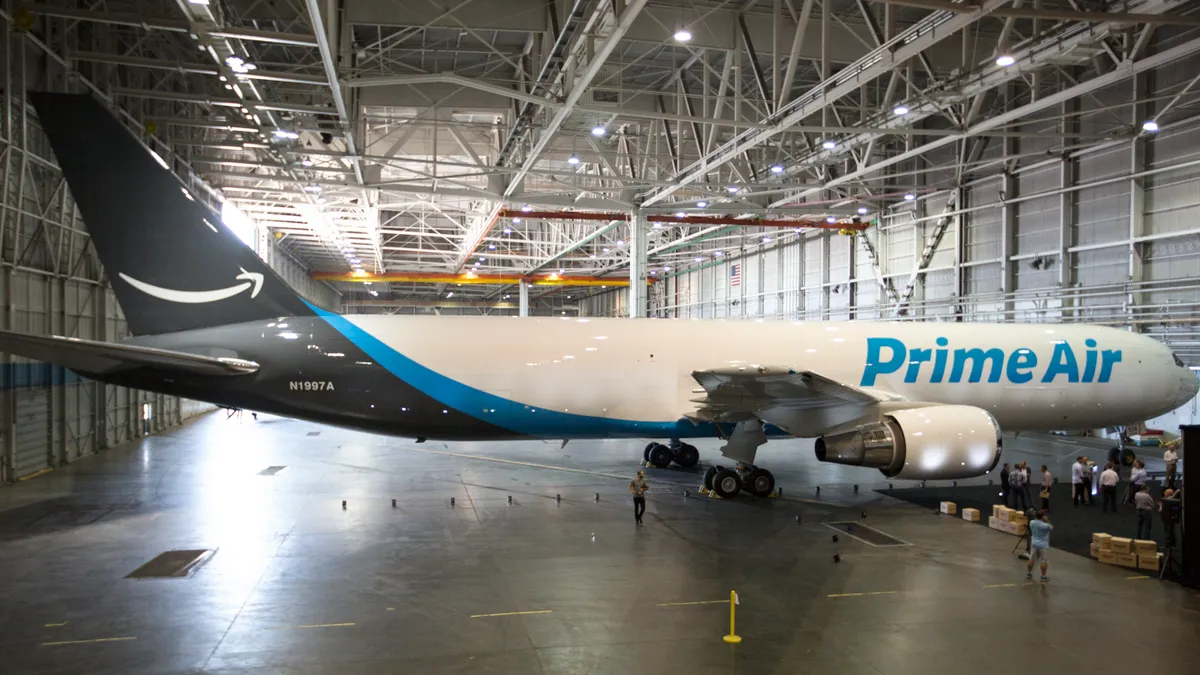Dive Brief:
-
Amazon has built and continues to scale a vast fulfillment and delivery network that could could upend shippers like UPS, FedEx and the United States Postal Service, according to some two dozen former and current executives from Amazon and and its business partners who spoke to The Wall Street Journal.
-
The operations spring from the e-commerce giant’s efforts to speed up fulfillment and delivery in the most efficient way possible, but the retailer aims for it to become a shipping business unto itself, according to the report.
-
Bypassing third-party shippers could save Amazon $1.1 billion annually, according to Citigroup Inc. analysts cited by the Journal. That translates to savings of $3 or more on a typical delivery, which now costs $7.81 on average.
Dive Insight:
There has been much speculation about Amazon’s delivery ambitions, and several outlets are predicting that it could go large.
"Among other opportunities, Amazon has 'powerhouse potential' in the large transportation and logistics market, dominated by global enterprises such as DHL and UPS," according to an Oct. 19 report from Baird Equity Research. "Our assessment of Amazon's broadening fulfillment ecosystem, internal domain expertise and early initiatives with Prime Now to offer third-party delivery suggests there is evidence Amazon may ultimately pursue more comprehensive third-party services.”
Amazon’s shipping and fulfillment costs are growing faster than its revenue, but so far the company has focused on making moves to optimize those operations. Amazon’s efforts include an Uber-like crowdsourced ground delivery network it calls Amazon Flex, the purchase of thousands of semitrailers and, of course, drones. In August, the company unveiled its first Prime Air-branded cargo aircraft in an inaugural flight during Seattle’s annual Seafair Air Show.
Earlier this year, FedEx dismissed the notion that Amazon is a threat to its business. Others concur: RBC Capital Markets analyst Mark Mahoney noted that Amazon’s shipping and fulfillment costs continue to rise faster than its sales. "All in, we believe it is likely Amazon will make a concerted effort to take over ever larger portions of its supply chain," he said in a report earlier this year. "However, a full-blown Amazon parcel delivery operation would likely take years to complete, so we believe [FedEx] and UPS would have time to react.”
Experts have told Retail Dive that Amazon’s shipping services could indeed rise, much like its cloud services have, to serve third parties. While Amazon built its Amazon Web Services unit to serve its own needs at first, it developed it with the idea of providing services to outside parties. Entities from Netflix and the U.S. Central Intelligence Service now employ its services.
“They’ve built this enormous platform that enables them to service customers with this logistics network — inventories they own, inventories they hold and inventories they direct,” Mark Cohen, professor of retail studies at Columbia University, told Retail Dive last month. “[A]t the end of the day, there’s a lot more to Amazon than just this tremendous array of merchandise.”
That’s a major reason Amazon is losing little sleep over Wal-Mart’s recent $3 billion acquisition of e-commerce upstart Jet. “Amazon is already well onto creating its own shipping infrastructure and cargo fleets, entertainment content, connected devices, and a lot more,” retail futurist Doug Stephens told Retail Dive in an email last month. “They’re playing chess at a grandmaster level, while everyone else is learning checkers.”










